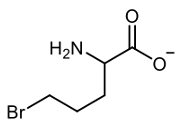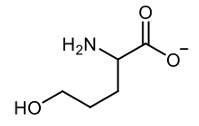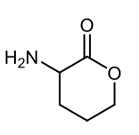Hey everyone. So, here we're going to talk about amino acid synthesis through the use of our acetoamido malonic ester synthesis. Now, here in the intro, we're going to say acetoamido malonic ester synthesis is a variation of malonic ester synthesis. If we take a look at our structure to the right, we're going to say it uses diethyl, which are these apples here, acetamidos which is our mind portion right here, and then we have malony, so the portion that we've seen in yellow. That portion, as well as the apple portions, we should be familiar with because, again, it's a variation of the malonic ester synthesis.
Now, here, it's going to take place in 3 steps. If we look, we have steps 1, 2, and then steps 3a and 3b are step 3. You've just broken them down into 2 portions. If we take a look at each of these steps, we're going to have step 1 which is enolization. This is where a strong base deprotonates the alpha carbon of Acetomedomalonic Ester.
So we take a look here. We're going to have our alpha carbon here in between both carbonyls. It's an acidic hydrogen. We're going to use here our ethoxide as our strong base. It's going to come in and deprotonate.
We remove this H here, the carbon holds onto the electrons. So now we have our negatively charged carbon because it has possession of that lone pair. So we're going to say here this represents the enolate of our acetometomalonic ester. Next, we're going to have alkylation of our enolate. So the enolate anion attacks an alkyl halide in an SN2 reaction.
So now I've introduced this methyl halide. This negative carbon will use its lone pair to attack this carbon, kicking out the halogen. And in that way, you've attached the methyl group to the alpha carbon. So we can see this as an alkylated acetomedomelonic ester. Now, step 3a is hydrolysis.
We're going to say here that the amide and the esters are hydrolyzed. Remember, esters and amides are carboxylic acid derivatives. So if we do hydrolysis here, it will return the esters into their carboxylic acids. And if we're breaking this amido or amide group or cleaving here, this NH becomes this protonated amino group here. And this portion which we don't see becomes a carboxylic acid.
It's left to the side because we're not really concerned with it. We want to take a look at the alkylaminomalonic acid here. So now that we have this, step 3b deals with decarboxylation where one of the carboxylic acid groups is lost as carbon dioxide. So if we take a look here, we introduce heat and that's going to cause decarboxylation. We'd lose this portion of CO2.
And at the end, what have we created? We've created an amino acid. So again, portions of this should be pretty familiar to you because they are dealing with malonic ester synthesis, a reaction we've seen before in the past. We're now incorporating additional steps to help us get to our final amino acid.
So, just remember, this particular way of creating an amino acid is comprised of 3 steps with step 3 being broken down into 3a and 3b.






